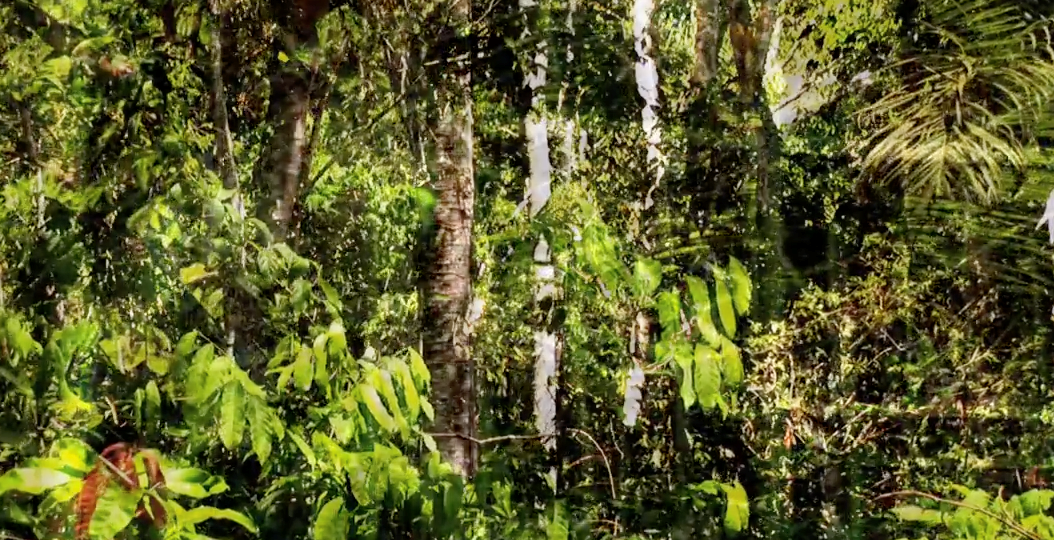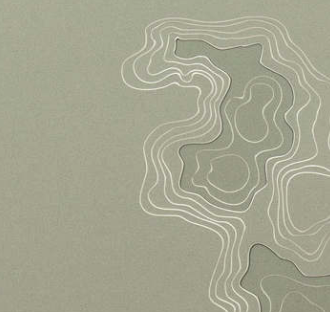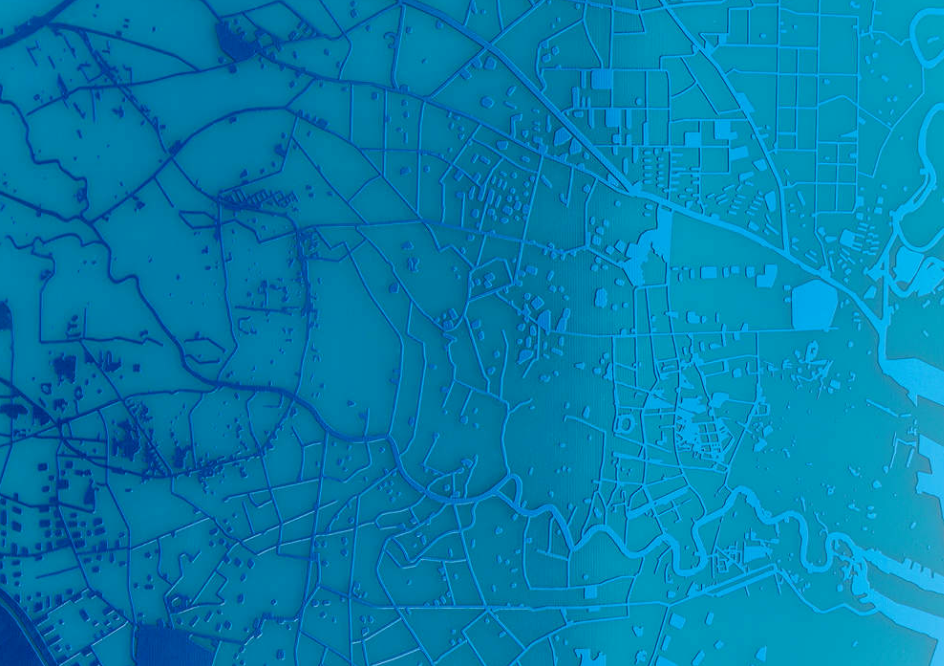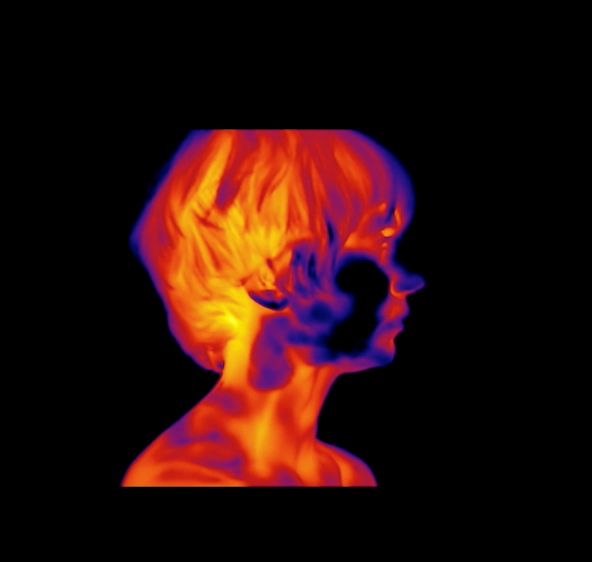Gisela Motta and Leandro Lima are artists based in São Paulo, Brazil, who explore the interactions of art and technology in order reflect our contemporary experiences and share the culture of other communities.
In 2008 they connected with a village of the Yanomami tribe in Brazil and were able to stay with them for a period of time, with the tools and technology for their artwork. Amoahiki, which means "Welcome" in Hawaiian and Xabori are the pieces that resulted from this project. Amoahi is an intimate look into a spiritual ritual of the Yanomami that connects them to nature and specifically trees. The ritual was conducted by the tribes' Shamans who gave Gisela and Leandro the opportunity to document it. Their experience was executed in a work which puts its viewers in an intimate connection with the tribes' practice and opens some understanding of a very private experience to new audiences. In this way the spirituality of a community becomes reflected in its art, and it is shared for all to develop a deeper understanding of nature and a culture that has depended on it and cherished it for hundreds and hundreds of years. It is a testament to both environments and cultures that are being threatened by development and ecological waste of the 20th and 21st centuries. The film is projected onto a screen of multiple layers of chopped cloth when displayed. Xaboir combines multiple frames in lenticular images to represent the transitioning and transforming shape of a Shaman's body during a Yanomami ritual.
 Amoahikihttp://www.aagua.net/AmoahikiXabori
Amoahikihttp://www.aagua.net/AmoahikiXabori
The duo of artists spoke of the difficulties in being accepted by the tribe, in order to accomplish this work, and they courageously put themselves in a difficult situation to share on a large platform the experience of these rituals and bringing greater understanding, of a culture and its practices, in a simple and effective manner. Art often reveals intimacies of other cultures that we might not otherwise fully understand from our own perspectives, and that is one of the most accomplished aspects of the piece. While the duo was welcomed into the experience, the tribe was not always accepting of outsiders and there were situations of aggression that the couple had to deal with, in order to accomplish the piece, but the end result gives a revealing look, in their interpretation of an ancient practice, to the viewer. While popular religions across the globe have imagery and symbolism that is abundant and widely accessible, images that help give value and reach to their own individual practices, and to some degree, an element of respect, smaller, less understood cultures do not have such elements to represent and share their messages. For that reason, explorations into these religious practices and respectful, empathetic relationships between these practices, technology and art, allow greater compassion, understanding and respect for cultures that are often undermined and overlooked, cultures whose environments are threatened and their natural resources depleted. In that way the project is a great example of the vital and necessary merging of technology and art, as well as creative explorations into areas beyond our reach, emotive and accessible representations of practices that to us otherwise would be unknown.
Their relationship with art, technology and the environment also resulted in a piece documenting the decreasing water levels of endorheic lakes, which are completely enclosed lakes, with no rivers or tributaries, that are vital for human survival around the globe. In "Passe Partout," satellite images captured past and current water levels of these lakes, allowing a representation of the problems of human's effect on the environment; global warming, overuse and its implications for mankind around the world. Lake Urmia, the largest lake in the Middle East, is represented in this project, which, through damming and pumping of groundwater, has been reduced to ten percent of its former levels. Also detailed is the decimation of Lake Poopo, in Boliva, which has been totally depleted from climate change, mining and agricultural operations. Detailed also is the visualized story of Lake Chad in Africa, a water supply to over 68 million individuals that has decreased by 95% in a little over thirty years. The work uses available technology, and practices in design, to represent major environmental problems facing our globe.
 Passe Partouthttp://www.aagua.net/Passe-Partout In "Circuit Conductor" Lima and Motta use similar technology based on cartographic techniques to create a visual display detailing how water masses in urban areas have been diverted and altered from the developed landscape. They used industrial materials to represent the changing environment of water resources, how cities have both been built around waterways and how these environments have changed from the affects of human development.
Passe Partouthttp://www.aagua.net/Passe-Partout In "Circuit Conductor" Lima and Motta use similar technology based on cartographic techniques to create a visual display detailing how water masses in urban areas have been diverted and altered from the developed landscape. They used industrial materials to represent the changing environment of water resources, how cities have both been built around waterways and how these environments have changed from the affects of human development.
 Circuit Conductorhttp://www.aagua.net/Circuito-Condutor In another piece reflecting how technology and art merge to reveal more about ourselves and our impacts on others, the duo reveal in a thermograph intimate video piece how our body heat is transferred to others we interact with. "Calar" is two channels of synchronized video that display two people captured with thermo-cameras, showing the changes in temperature of the skin that occur when one person touches another. It is an intimate exploration of touch -- how in so many ways we overlook, or cannot see with the naked eye, our effect on the others around us that we come into contact with, communicating the physical realities of love and what happens when we interact with others.
Circuit Conductorhttp://www.aagua.net/Circuito-Condutor In another piece reflecting how technology and art merge to reveal more about ourselves and our impacts on others, the duo reveal in a thermograph intimate video piece how our body heat is transferred to others we interact with. "Calar" is two channels of synchronized video that display two people captured with thermo-cameras, showing the changes in temperature of the skin that occur when one person touches another. It is an intimate exploration of touch -- how in so many ways we overlook, or cannot see with the naked eye, our effect on the others around us that we come into contact with, communicating the physical realities of love and what happens when we interact with others.
 Detail "Calar"http://www.aagua.net/Calar Limo and Motta emphasize the ability of technology to reveal more about ourselves, our impacts on the environment, and create a greater understanding of our own natures, how we might better interact with our environment and comprehend the practices of other cultures that are far removed from our own. Their works encourage further explorations between technology, art and how these practices together can reveal and reflect more about our changing landscapes.
Detail "Calar"http://www.aagua.net/Calar Limo and Motta emphasize the ability of technology to reveal more about ourselves, our impacts on the environment, and create a greater understanding of our own natures, how we might better interact with our environment and comprehend the practices of other cultures that are far removed from our own. Their works encourage further explorations between technology, art and how these practices together can reveal and reflect more about our changing landscapes.
Page created on 8/11/2017 6:58:24 PM
Last edited 9/14/2018 3:29:06 PM
